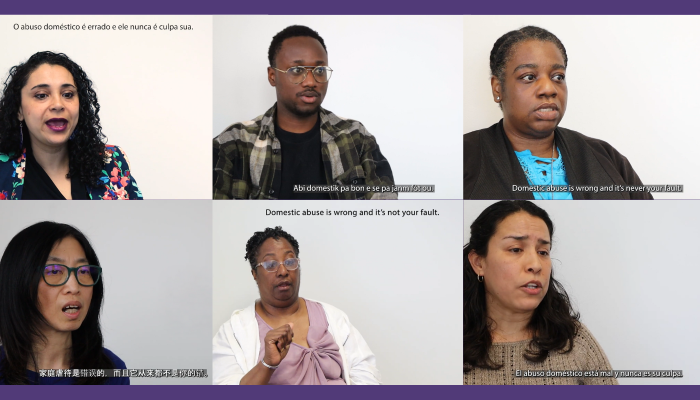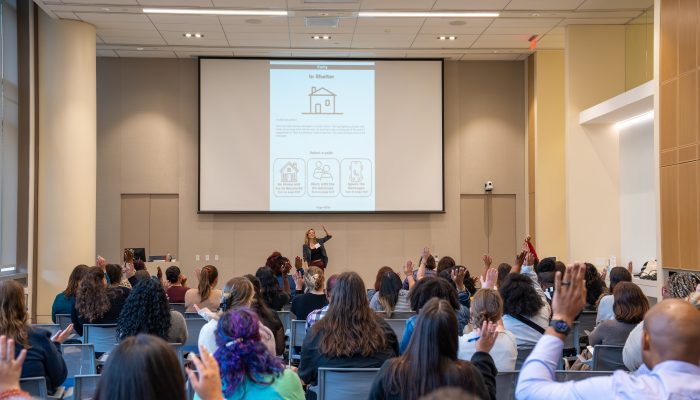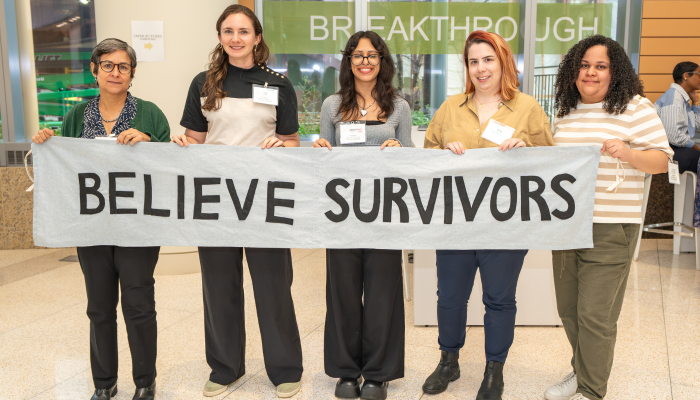Domestic abuse is common and complicated. That’s why it’s so important for information on getting help to be easy to understand. Unfortunately, many resources are not translated or are hard to understand. One new project aims to make this better.
The Office of Domestic Violence Strategies (ODVS), Office of Immigrant Affairs (OIA), Office of People with Disabilities (OPD), the PA DHS Office of Developmental Programs (ODP), the ASERT Collaborative, and the Pennsylvania Coalition Against Domestic Violence (PCADV) collaborated to make new brochures and videos about domestic violence.
“Images and icons helped me to understand the information.” – Survey Response
The project team got feedback to help design the resources. Surveys and focus groups showed what information was important. Translated surveys made sure that people who speak different languages could give feedback. Over 80% of surveys were taken in languages other than English, including American Sign Language. This feedback found:
- Easy-read information means everyone can understand
- Icons and pictures make new information clear
- Confusion makes people scared to reach out
- People want to know that they can get confidential help
“Community feedback was really important to us to make sure the messages were relevant and appropriate,” said Azucena Ugarte, Director of ODVS.
This information helped the team decide on the text for the brochure. The design was influenced by an easy-read brochure used in the United Kingdom. ASERT used a graphic designer to make an easy-read brochure. They used simple text and icons to explain what domestic abuse is and how to get help. The brochure is available in different languages.
“Language should never be a barrier to safety, healing, or access to critical information. This project is a powerful step toward ensuring that our multilingual communities know that support and resources are available to them. The multilingual videos offer more than just information — by removing language barriers, we build trust and create real connections,” said Deise Rodrigues, Director of Language Access Programs with OIA.
“It would be better to watch a video.” – Survey Response
Many people prefer watching a video to get information. This is also true for information that can feel intimidating. The project team used the community’s feedback to write a script to share more information than the brochure. They translated the script and filmed videos in different languages.
The video features bilingual volunteers. Focus group feedback wanted videos to feel approachable. Like the information is being shared by a trusted friend. The brochures include a QR code that links to a video in the same language. The videos share more information, as well as encouragement for survivors to seek help.
“People with intellectual disabilities need this information. But it’s not often designed with them in mind. We were glad to support this project to make resources to meet our communities’ needs,” said Lea Sheffield, Special Populations Unit Manager for ODP.
Access and Share these Resources:
- Download brochures for your community.
- Register for a webinar on October 22 to learn more about how these resources were made.
- Watch and share the videos




